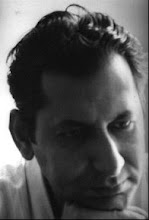Zahra's Paradise
The book was billed as "Zahra's Paradise - A Graphic Novel for Teens" on Amazon. I just thought that I love graphic novels but had never read one for teens, so I got the book.
The book should not have the 'teen' word attached. It will be then bought by a lot more people. It's a must read. Brilliantly written by Amir and illustrated by Khalil — but, remember, both names are nom-de-plume because of the fear of being caught by the Irani Government or its Snipers.
It blew my mind!
The book should not have the 'teen' word attached. It will be then bought by a lot more people. It's a must read. Brilliantly written by Amir and illustrated by Khalil — but, remember, both names are nom-de-plume because of the fear of being caught by the Irani Government or its Snipers.
Zahra's Paradise is fiction as far as the tale itself is concerned. But all of it is based on true stories. Stories that we sometimes hear — but many do not reach us. Except the tale of Neda that went viral. More about that later on in this introduction.
While it was fiction-based-on-truth, it was compared to Art Spiegelman's Maus and Mariane Satrapi's Persepolis which were the start of personal stories in Graphic Novels.
Two brilliant Graphic Novels that you must read!
The black and white artwork in Zahra's Paradise is remarkable. The story is something that we must not just know but be careful to see that our State doesn't head this way (… though there are some early signs). Protests here, so far, have been 'peaceful' if one is to compare them with this story. But there have been some deaths. That's how all this starts …
One of the scenes from Zahra's Paradise
Zahra's Paradise, the name, is a translation of Beheshté Zahra - a graveyard outside Tehran that is named after the Prophet's daughter, Bibi Fatemat-uz-Zahra. There is a popular belief that anyone buried in this cemetery will rise in Paradise on Doomsday.
Neda Agha-Soltan is touched briefly in the book. The video of her death went viral on 20 June 2009. She was unarmed and killed by a bullet on her chest. Paulo Coelho saw the video and put it on his website that had many more people viewing it. Why did he do that? Because his friend, Dr Arash Hejazi, seen in the video, was the publisher of Coelho's books in Iran. Dr Hejazi tried to help Neda and keep her alive, but failed.
Her death — as is usual — was blamed on foreign powers. He was then accused of trying to help the 'killers' in a conspiracy theory that the Government launched. He escaped to Britain and has written his story in a book called The Gaze of the Gazelle.
•••••
Her death — as is usual — was blamed on foreign powers. He was then accused of trying to help the 'killers' in a conspiracy theory that the Government launched. He escaped to Britain and has written his story in a book called The Gaze of the Gazelle.
"OK, I was bleeding. I was wounded. The bullet that pierced Neda's chest took her life away, but ripped my life apart. She stared into my eyes and died. She couldn't say anything. But it was as if she was telling me: 'Do something!' and I couldn't do anything. Those eyes are following me wherever I go. Those eyes keep my heart bleeding. I lied when I said that memories fade away. Some don't. A few years ago I saw the film Memento by Christopher Nolan. There, Guy Pearce has lost his short-term memory after a blow to his head, during an attack on himself and his wife, during which his wife is killed. The last thing he remembers is the look on her wife's face, while life is slipping away from her body. From then on, his brain cannot keep short-term memories, so time does not pass from the horrible moment. The memory doesn't fade away, so he can't heal.
I couldn't heal. The memory of those eyes did not leave me. They haunted me, asking me to 'do something'. I spoke up about her, thinking that she will leave me. I talked to BBC, The Times and other media, when I realised that the Iranian government was trying to conceal her death and then blame it on foreign service. But she still didn't leave me. I had to do something else, or else I would have bled to death myself. So I wrote, and when I wrote, I felt better, and the eyes became kinder, and the bleeding stopped whenever I resumed writing. She wanted me to tell her story, the story of the generation, she wanted me to tell how it came to that moment… I wrote, because I was in pain, and telling the story eased the pain."
•••••
Roya Boroumand, to add another important name, is a remarkable human rights activist and runs a website that you must visit if you are interested in seeing the breadth of her work. (Read Sa'id's full story about Kahrizak - A prison that eventually closed, we are now told). She is responsible for a lot of stuff that fills this book which ends with 13 pages of finely written names of people who were assassinated or killed in Iran. The men and women are in a 'silent city' called Omid (Ümmeed in Urdu). You can visit this site to see the Omid Memorial Project which gave the list of 16,901 names at the time the book was going into print.
Labels: Activism, Books, Education, Events, Islam, Literature, Media, News, People, Politics, Religion





